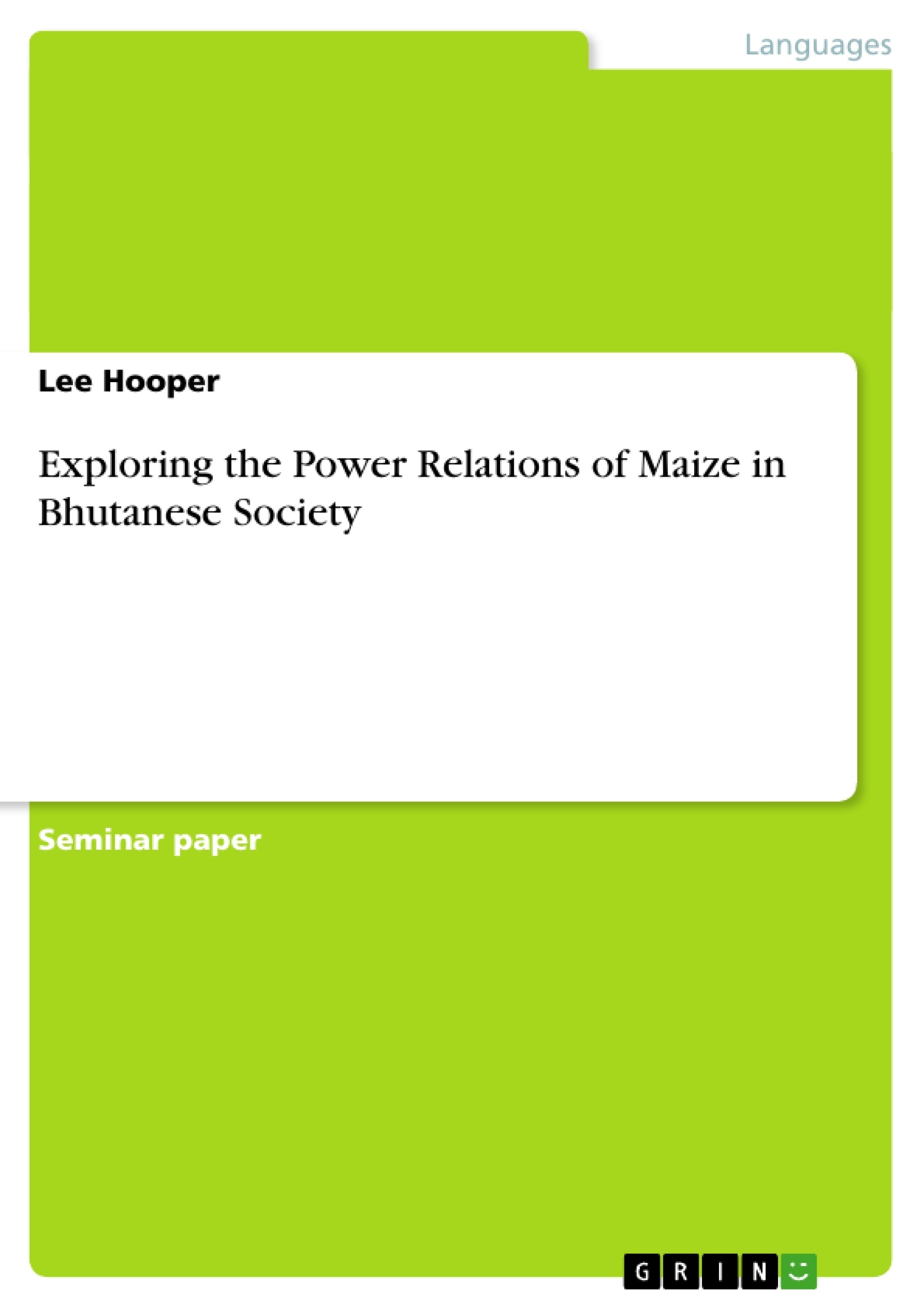Throughout the centuries maize has played a vital role in the power relations between people and has been used as a tool to manipulate power, particularly among the poor (Warman, 2003). From the African slave trade across the Atlantic, where it was given as a primary means of sustenance in the form of paste, its use as an introduced crop of control by colonial settlers, to its modern day use as animal feed and food aid, maize has a rich history in power relations, especially in traditional third world countries. This essay will identify and explore the way that maize is linked to power within its local commodity chain in the country of Bhutan – that is, among the vast majority of the peasantry who utilise maize as a primary subsistence food. Through outlining Bhutan’s general maize statistics and demonstrating the key forces behind the power relations of maize throughout Bhutan, it will be concluded that power lies primarily in the political and religious conditions of the country on the macro level and the social conditions of the family unit on the micro level. Furthermore, it will be shown that the religious and political conditions directly contribute to how power is manifested and utilised in the family with regards to maize production, exchange, and consumption.
Inhaltsverzeichnis (Table of Contents)
- Introduction
- Maize and Power Relations
- Maize in Bhutan
- Mintz's Theory of Food Meanings
- Wolf's Theory of Structural Power
- Maize Production in Bhutan
- External Influences
- The Monarchy
- Buddhism
- Internal Influences
- Family Structure and Gender Roles
- Changes in Family Structure
Zielsetzung und Themenschwerpunkte (Objectives and Key Themes)
This essay examines the power dynamics surrounding maize within the local commodity chain in Bhutan. It aims to demonstrate how maize, while primarily a subsistence food, is intertwined with power relations on both the macro and micro levels. * **Power Dynamics in the Maize Commodity Chain:** Exploring the interplay of power between different actors involved in the production, exchange, and consumption of maize. * **Influence of External Factors:** Analyzing the impact of political and religious structures on maize production and consumption. * **The Role of the Monarchy:** Examining how the Bhutanese monarchy exerts power over maize production and its potential for commodification. * **The Impact of Buddhism:** Assessing the influence of Buddhist ideology on maize production, consumption, and the promotion of a subsistence culture. * **Family Structure and Gender Roles:** Investigating the decision-making power within families regarding maize production and consumption.Zusammenfassung der Kapitel (Chapter Summaries)
The essay begins by outlining the significance of maize in power relations globally, highlighting its historical use as a tool of control. It then focuses on the Bhutanese context, detailing the country's maize statistics and demonstrating how maize, while primarily a subsistence food, still holds a commodity status in Bhutan. The author then introduces Mintz's theory of food meanings, emphasizing the “inside” and “outside” meanings attributed to foods, and Wolf's concept of structural power, which underscores how external forces influence individual behavior. The essay explores the political landscape of Bhutan, highlighting the coexistence of elements of feudalism and early capitalism, which shapes maize production. It also explores the impact of the monarchy, emphasizing its control over the potential for maize commodification. The essay then analyzes the influence of Buddhism, arguing that its emphasis on non-materialism and subsistence living contributes to the limited commodification of maize. Finally, the essay examines the power dynamics within the family unit, focusing on the role of gender and the changing family structure in Bhutan. It concludes by recognizing the complexity of power relations regarding maize, highlighting the influence of regional customs and the evolving nature of the family unit.Schlüsselwörter (Keywords)
The primary keywords and focus topics of the text include maize, power relations, commodity chain, Bhutan, political structures, religious influences, monarchy, Buddhism, family structure, gender roles, and subsistence food. These themes emphasize the interconnectedness of socio-economic factors, cultural beliefs, and political influences in shaping the production and consumption of maize in Bhutan.- Arbeit zitieren
- Lee Hooper (Autor:in), 2012, Exploring the Power Relations of Maize in Bhutanese Society, München, GRIN Verlag, https://www.hausarbeiten.de/document/262250


